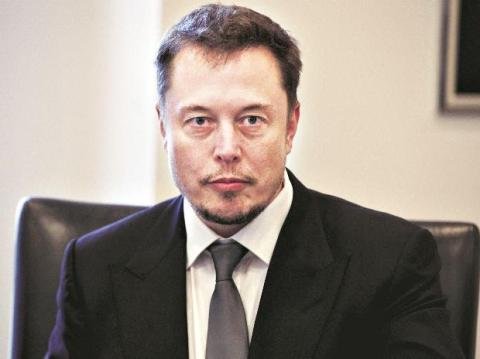CEO Musk kicked recently kicked up controversy by acquiring the SolarCity, a solar-panel installer founded by two of his cousins

A SpaceX founder and CEO Elon Musk
With all the car-making troubles that are hounding Tesla these days — from the Model 3 bottlenecks to the furious cash burn — it’s easy to overlook the company’s SolarCity headache.
But 16 months after Chief Executive Officer Elon Musk kicked up controversy by acquiring the solar-panel installer founded by two of his cousins, its obligations are a strain on Tesla’s finances. The $2 billion purchase came with a $2.9 billion debt load, and a chunk of that is soon coming due. That’s bad timing for a company churning through about $6,500 a minute and trying to stave off the need for another capital raise.
“SolarCity debt may not be the immediate cause of Tesla’s problems, but it certainly isn’t helping right now,” said Alexander Diaz-Matos, an analyst at credit research firm Covenant Review.
Tesla representatives declined to comment for this story. The solar business generated positive cash flow last year, according to the company.
Debt coming due
Tesla’s debt runs the gamut — convertible bonds, promissory notes, term loans, cash-equity debt, asset-backed securities. Most of the total is tied to Tesla the automaker.
For investors, the focus has largely been on the cash burn linked to struggles speeding up production of the Model 3, the sedan Musk is betting will be the first to bring electric cars to the masses. There’s also fresh concern over Tesla’s Autopilot after the fatal crash of a Model X last month that occurred while the driver-assistance system was engaged.
Tesla shares plunged 22 per cent in March and closed at $252.48 on April 2, the lowest in more than a year. They climbed 21 per cent through Thursday, after the company stood by its next Model 3 production target and said an equity or debt raise won’t be required this year. The stock traded down 2 per cent to $299.67 as of 11:31 am Friday in New York.
Higher leverage
The SolarCity debt is mostly non-recourse, meaning Tesla doesn’t guarantee repayment; SolarCity does. That’s backed by cash flow and assets. It’s still included in Tesla’s overall debt, though, which is used to determine credit ratings and impacts borrowing costs. Of Tesla’s $10 billion of total debt outstanding, about $3 billion is non-recourse, most of which comes from SolarCity.
Without that, Tesla’s leverage would likely be more in line with that of single B rating, according to Bloomberg Intelligence analyst Joel Levington.
Single B issuers typically borrow at a rate of 5.9 per cent, according to data compiled by Bloomberg. Tesla’s bonds due in 2025, which are rated Caa1 by Moody’s Investors Service and B- by S&P Global Ratings, yield about 7.2 per cent, according to Trace bond price data. Tesla’s issuer rating by Moody’s is equivalent to S&P’s B- rating.
Mounting financial pressures, in addition to the Model 3 shortfalls, spurred Moody’s Investors Service’s downgrade of Tesla’s credit rating last week to B3, six levels below investment grade.
.gif)
Hi! I am a robot. I just upvoted you! I found similar content that readers might be interested in:
https://www.bloomberg.com/news/articles/2018-04-06/hidden-by-model-3-mess-tesla-s-other-problem-is-about-to-emerge
Downvoting a post can decrease pending rewards and make it less visible. Common reasons:
Submit